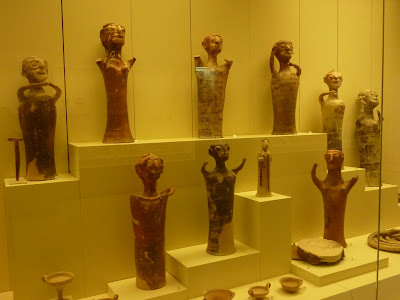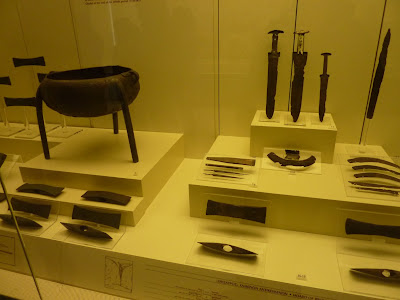From Tiryns we drove the few miles on to ancient Mycenae, parking for the night at the Treasury of Atreus, a
tholos (round) tomb, a tumulus, sort of, but with a monumental beehive stone structure beneath. We toured it the next morning, and then did Mycenae, a few hundred yards up the hill, and its museum. All this is Bronze Age, 16th-12th centuries BC, the stuff of Homer. Well, the stuff Homer wrote about, centuries later. Mycenae was Agamemnon's home town. Also Clytemnestra's,
et al. And Pelops, too.
 |
Entrance to the Treasury of Atreus, also called, fancifully, Agamemnon's Tomb;
again, the stones are huge although more finely dressed at Mycenae
|
 |
Inside the beehive; nothing was found here nor in other tholos tombs in the area;
they are fairly conspicuous and have been used by shepherds and others for aeons...
just as soon as the Mycenean world collapsed in the 12th century BC, I speculate
|
 |
The enormous doorway
|
 |
Vicki poses for scale; the tomb is immense
|
 |
As do I, by the doorway; the lintel measures 28x23x5 feet,
130 tons; Cylcopean indeed; the triangular space above it
is characteristically Mycenean, devised to reduce the weight
the lintel carries
|


















































